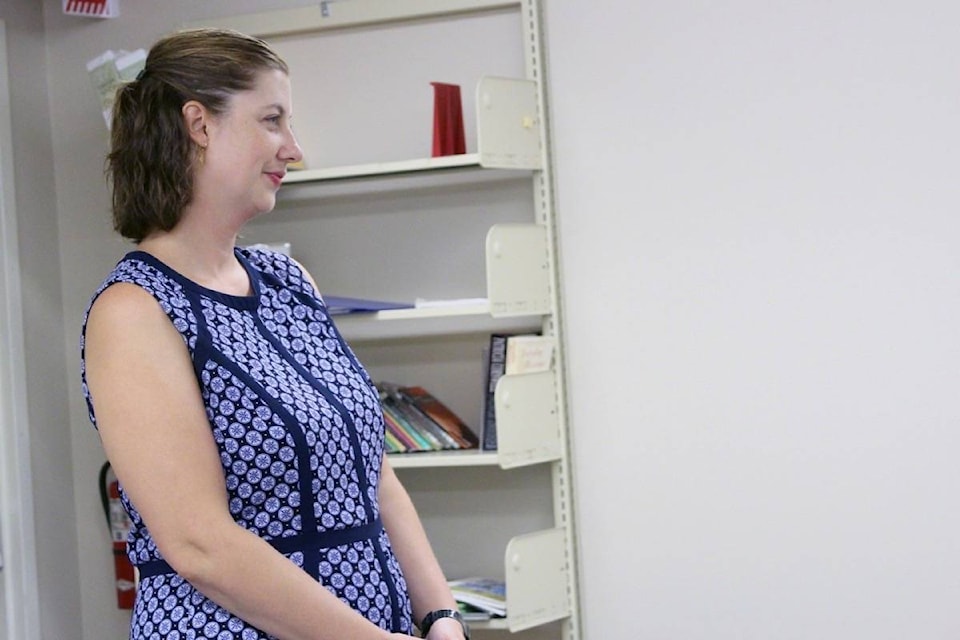A linguistic anthropologist who teaches at the University of British Columbia Okanagan campus in Kelowna shared her work on language revitalization with Castlegar residents last Wednesday.
Christine Schreyer is an associate professor of anthropology at UBCO, where she teaches courses in linguistic anthropology. She also works with communities in both Canada and Papua New Guinea to revitalize and document languages and recently returned from her latest trip to Papua New Guinea. Unfortunately she picked up an unwanted souvenir on the trip, and was still recovering from malaria when she gave her talk.
Her unexpected illness meant that she was forced to cancel some of her other West Kootenay appearances, but two people from Salmo made the trip to the Castlegar Public Library so they could hear her talk anyway.
Schreyer shared her work with the Taku River Tlingit First Nation in Atlin, B.C. She’s been working with the First Nation since 2005 to help revitalize the Tlingit language, creating a board game called Haa Shagóon itx yaa ntoo.aat (Travelling our ancestors’ path) to help community members learn the language. She also helped create a website (trt.geolive.ca) that teaches the Tlingit language through Taku River Tlingit place names.
She first started traveling to Papua New Guinea in 2010, where she has been working with the Kala Language Committee to help revitalize the Kala language. Her work with the six villages where four distinct dialects of Kala are spoken has included aiding in the development of a Kala alphabet.
“We documented the language, which meant we sat down with people like Reuben, [a village elder who speaks fluent Kala,] and two people in each village, one male, one female … and we listened to all of the different sounds to find out what were the sounds and then I suggested symbols to them that they could use and that they chose,” Schreyer explained.
While Schreyer’s work in Papua New Guinea concerned Kala, the more common language there is Tok Pisin, a pigeon language. Schreyer’s interest in pigeon languages led her to teach a class on them, as well as creole languages and constructed languages (conlangs), and that’s how she came to Na’vi, the conlang created for the movie Avatar.
Schreyer conducted a survey in 2011 that identified 293 Na’vi speakers, only 18 months after the film’s release.
“I wanted to know who they were, why were they learning Na’vi and how were they doing it. Because part of my other work is looking at how Indigenous communities are trying to revitalize their languages and it’s such a struggle for people,” she said. “And what were these people doing? The movie had only been out for 18 months, when I did my survey, and I found out that people, some of them, 30 per cent of the respondents, were at an intermediate level.”
Schreyer was able to observe how fans learn conlangs and use that information to help her in her language revitalization work.
The publicity Schreyer’s work on Na’vi received in turn led her to start constructing languages for Hollywood. She created both Kryptonian for the Superman movie Man of Steel, and the language spoken in the opening sequence of the new Power Rangers movie.
Schreyer is also an executive producer for the documentary Conlanging, which premiered in Calgary the week before her Castlegar talk. The documentary is being released online in mid-August. Visit conlangingfilm.com for more information.
